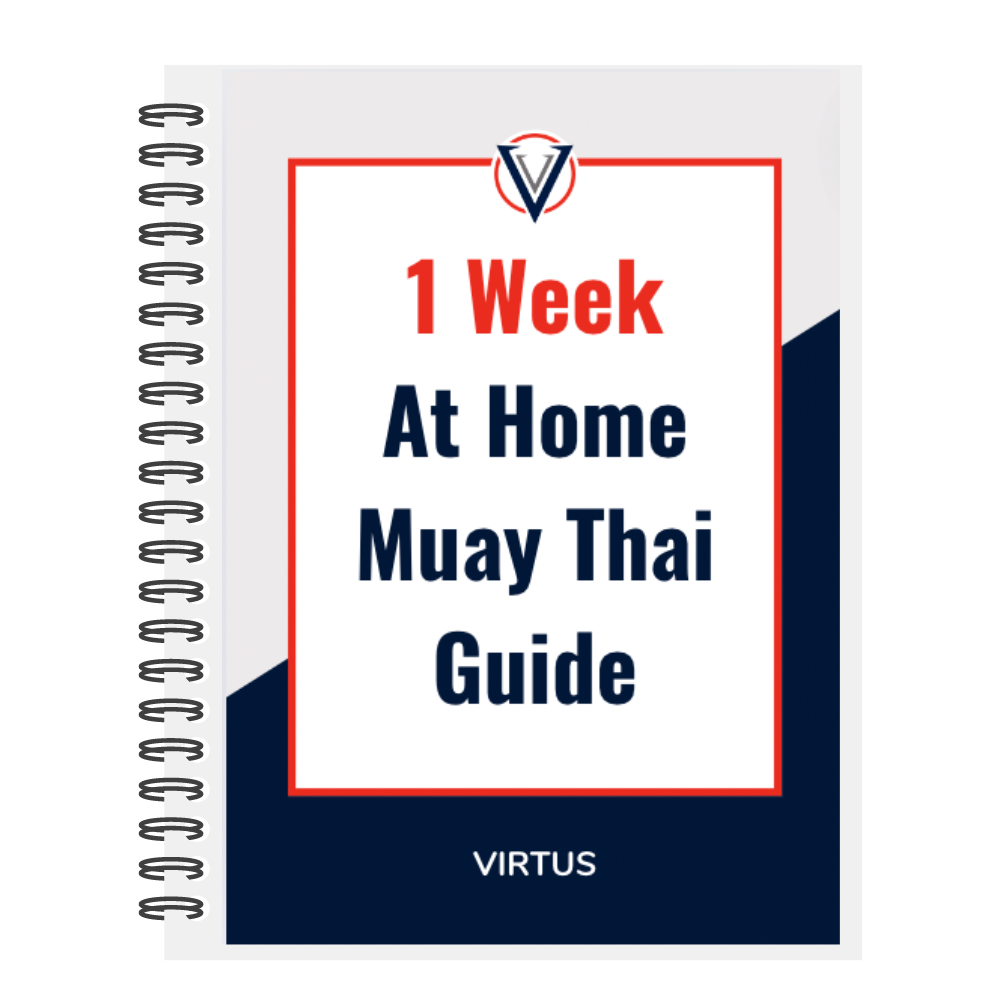Overview
Kicks in Muay Thai can land at any area on the opponent from the thigh to the head, except the groin. No matter where you land the kick, you should strike with the shin bone to cause maximum damage. A human's shins can be conditioned to be as tough and powerful as a baseball bat and are less likely to break upon impact than the small bones in our feet.
Understanding the mechanics behind a Muay Thai kick are key to effective delivery. Most Muay Thai kicks are delivered in a roundhouse (or side-angle) fashion, except the push kick (teep) and some fancy kicks. This means they come around in a semicircular motion. Unlike martial arts that snap or stiffen the kicking leg, Muay Thai roundhouses typically have the striking leg relaxed and passive, without a bend in the knee. Pivoting on the balls of your supporting feet to open the hips enables you to generate torque and drive through the hips, ensuring both speed and explosive power. The hips are rotated into the kick and core muscles engaged to drive the rotation. Balance can be stabilised by throwing down the arm on the same side as your kicking leg. It's important to keep in mind, as with knees, that you should kick through your opponent rather than simply at them.
Low Kicks
Low kicks can be targeted at the inside, outside, top or back of the thigh. They can also be focused on the area just above the knee to damage the knee joint - which is nasty. Leg kicks are designed to weaken the opponents legs, making them less likely to generate power in their strikes and defend effectively. Like a tree, striking someone's base brings instability to the rest of the body. They can also be used to gauge range and as set-ups for body or head strikes.
Stuart Tomlinson @ Warrior Collective
Tiger Muay Thai @ Tiger Muay Thai Muay Thai & MMA Gym, Phuket
Mid Kicks^
Mid (or body) kicks are targeted anywhere from above the hip to below the neck. Ideal targets are the ribs (especially the floating ribs) and the liver on the right side. You can also target the arms with repetitive kicks to damage your opponent, making it difficult to throw strong punches and maintain a decent guard. Strong body kicks that land clean on the body can often TKO opponents, especialy if the liver is targeted. While highly effectively if they land cleanly, mid kicks are arguably the easiest to defend as the defender has numerous options: checking the kick, blocking with the hands (Dutch kickboxing style), catching and parrying the kick. Even if the opponent doesn't attempt to defend against the kick, you can still clash against their elbows, inflicting pain to both parties. Nonetheless, body kicks are staple Muay Thai kicks and among the first techniques you'll learn when starting out.
Ann Denlangu @ Muay Thai Pros
Tiger Muay Thai @ Tiger Muay Thai Muay Thai & MMA Gym, Phuket
High Kicks^
High kicks are targeted at the head and neck and are notorious for their knockout potential. By striking with a powerful kick to the head, the brain can be rattled causing unconsciousness. Likewise, when kicking the neck, heavy blows to the vagus nerve can cause short periods of unconsciousness and longer periods by striking hard enough to cause a "whiplash" effect. High kicks can be difficult to land as they target the area where your opponent will naturally have their guard. Therefore, they are often thrown with speed and after being set-up with other strikes or footwork which moves your opponents' guard from its standard position.
Effective high kicks require advanced flexibility and balance and, as such, can take longer to perfect.
Tiger Muay Thai @ Tiger Muay Thai Muay Thai & MMA Gym, Phuket
Kru Yod via Daniel Baci
Push Kicks^
Push kicks, also known as Teep Kicks, are a powerful long range weapon in Muay Thai. They can be targeted anywhere from the thigh to the face, except for the groin. Unlike other kicks in Muay Thai, the push kick has a stiff knee and is meant to push through the opponent by driving the hips forward and leaning back slightly to elongate the kick. Push kicks can be used for a variety of purposes, such as gauging range, stopping an opponent's advance, pushing them away, or even knocking them out. It is important to be aware of the power of push kicks, as they can be effective not only when landing on the face, but also on the gut and solar plexus. The height of the kick can be controlled by the height of the lifted knee, and curling the toes back on the foot helps to strike with the ball of the foot.
Justin Greskiewicz @ Fight Tips
Tiger Muay Thai @ Tiger Muay Thai Muay Thai & MMA Gym, Phuket
Fancy Kicks^
In comparison to American Kickboxing and Taekwondo, Muay Thai doesn't have many so called "fancy" kicks. Muay Thai relies heavily on the hips and roundhouse kicks that have a passive striking leg. While the other two sports involve a lot of kicks with stiff/chambered legs which can be directed by snapping the knee. This makes for elaborate ranges of motion in kicks like the crescent kick, axe kick and tornado kick, for example.
Nonetheless, there is plenty of opportunity for creativity in Muay Thai and, in addition to jumping roundhouses, the question mark and Saenchai's cartwheel kick are great examples of this. Faking a kick and then using the hips and pivot of the supporting foot to redirect it into a different point of impact (as you do in a quesiton mark kick) are creative Muay Thai kicks which can be considered "fancy". Spinning kicks thrown on their own aren't very common in Muay Thai overall, however, a roundhouse that misses can easily be followed up with a spinning kick. However, it's important to note that in traditional Muay Thai rules, cartwheel kicks are illegal because you cannot kick with your glove touching the mat. Knowing the rules and regulations of Muay Thai is crucial for any practitioner to ensure fair and safe competition.
Fightcoach.tv
Malaipet via Submissions101
Saenchai via Sean Fagan
Kick Combinations^
Kick combinations can be thrown on their own or can be set-up (especially with punches) as part of a longer combination. Kick combinations can target a particular region or a several at once. For example, you may throw a push kick followed by roundhouse kicks to each side of the body. Or you can start with an inside low kick followed by rear leg roundhouses to the body or head.
Sam-A Gaiyanghadao @ Evolve MMA
Sean Fagan @ Muay Thai Guy
How can you improve the power and speed of your Muay Thai kicks?
To enhance the power and speed of Muay Thai kicks, focus on hip rotation, weight transfer, and proper technique. Strengthening core muscles and practicing kicks with on a heavy bag can also improve overall kicking performance significantly.
How important is flexibility in executing powerful Muay Thai kicks?
Flexibility plays a crucial role in executing powerful Muay Thai kicks. Having good flexibility allows you to achieve a greater range of motion, enabling you to kick higher, faster, and with more precision. It also helps reduce the risk of injuries by ensuring that your muscles and joints can move freely through their full range of motion without strain or restriction. By incorporating regular stretching exercises into your training routine, you can improve your flexibility over time and enhance the effectiveness of your Muay Thai kicks. Remember, flexibility is not only important for performance but also for preventing injuries and maintaining overall physical health in the long run.













